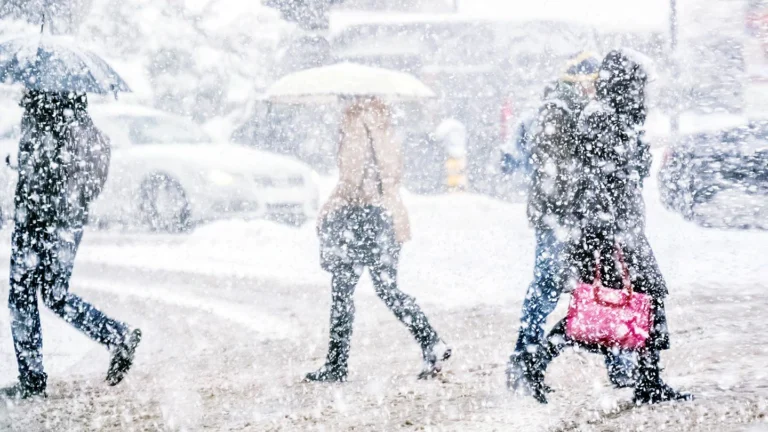Attention residents and travelers in Northern Minnesota and Northwest Wisconsin, a winter weather advisory issued for northern minnesota and northwest wisconsin. As the region braces for impending weather conditions, it’s essential to stay informed and prepared. This advisory serves as a crucial reminder to take necessary precautions to ensure safety and minimize disruptions caused by potentially hazardous winter weather. In this article, we’ll explore what a winter weather advisory entails, the expected impacts, and practical steps you can take to navigate through this weather event effectively. Let’s delve into the details to stay ahead of the winter weather challenges facing our community.
Impacts of the Advisory on Winter Weather Advisory Issued for Northern Minnesota and Northwest Wisconsin.
This is a Winter Weather Advisory Issued for Northern Minnesota and Northwest Wisconsin. Residents and travelers should be aware of the potential hazards posed by the anticipated conditions. Among the primary concerns are hazardous road conditions, including slippery roads and reduced visibility, which can increase the risk of accidents and travel delays.
-
Potential Hazards
The issuance of a winter weather advisory was issued for Northern Minnesota and Northwest Wisconsin. Highlights several potential hazards that residents and travelers should be prepared for. One significant concern is icy road conditions, which can result from freezing rain or melted snow refreezing on surfaces, making driving treacherous. Reduced visibility caused by blowing snow or fog is another hazard, increasing the risk of accidents, especially on highways and rural roads. Additionally, cold temperatures accompanying winter weather systems can lead to frostbite or hypothermia if individuals are not adequately dressed for the conditions. It’s essential for everyone in the affected areas to take these potential hazards seriously and take appropriate precautions to ensure their safety during the advisory period.
-
Expected Snowfall and Accumulations
Another critical aspect of the winter weather advisory issued for Northern Minnesota and Northwest Wisconsin is the expected snowfall and accumulations. Meteorologists provide forecasts detailing the amount of snow expected to fall within a given timeframe, helping residents and authorities prepare accordingly. Heavy snowfall can lead to a range of hazards, including reduced visibility, difficulty traveling on roads, and the potential for power outages due to snow-laden branches falling on power lines. By staying informed about expected snowfall amounts and accumulations, individuals can make informed decisions regarding travel plans and outdoor activities, thereby minimizing risks associated with winter weather conditions.
Precautionary Measures for Residents and Travelers
The winter weather advisory was issued for Northern Minnesota and Northwest Wisconsin. Residents and travelers should take precautionary measures to ensure their safety and well-being. One essential precaution is to stay updated on weather forecasts and advisory notices issued by local authorities. This information can help individuals plan their activities accordingly, avoiding unnecessary travel during hazardous conditions.
-
Safety Tips for Outdoor Activities
Engaging in outdoor activities during a winter weather advisory requires extra caution to avoid potential hazards. When venturing outside, individuals should dress warmly in layers and wear appropriate winter gear, including hats, gloves, and insulated boots. It’s also essential to stay hydrated and take frequent breaks to prevent exhaustion or frostbite. When participating in recreational activities such as skiing or snowboarding, it’s crucial to follow safety guidelines and stay within designated areas.
-
Travel Advisories and Road Conditions
Travelers in Northern Minnesota and Northwest Wisconsin should closely monitor travel advisories and road conditions before embarking on any journeys. During a winter weather advisory, roadways may become hazardous due to snow and ice accumulation, reduced visibility, and slippery conditions. It’s advisable to check the latest updates from local transportation authorities and use caution when driving, especially on untreated roads or bridges. Consider postponing non-essential travel until weather conditions improve, and if travel is unavoidable, allow for extra time to reach your destination safely. Additionally, maintain a safe following distance from other vehicles, reduce speed, and avoid sudden maneuvers to prevent accidents. By staying informed and exercising caution, travelers can navigate through winter weather conditions more safely and effectively.
Community Response and Preparedness Efforts
In response to the winter weather advisory issued for Northern Minnesota and Northwest Wisconsin. Local communities are mobilizing their resources and implementing preparedness efforts to ensure the safety and well-being of residents. Emergency services such as fire departments, police, and medical personnel are on high alert, ready to respond to any emergencies that may arise due to adverse weather conditions.
-
Emergency Services and Resources
As the winter weather advisory takes effect, residents of Northern Minnesota and Northwest Wisconsin can rely on a range of emergency services and resources to assist them during this time. Emergency hotlines and helplines may be established to provide information and assistance to residents in need.
-
Local Government Action Plans
In anticipation of the winter weather advisory, local governments in Northern Minnesota and Northwest Wisconsin are implementing action plans to address the potential impacts of the adverse weather conditions. These action plans may include measures such as pre-treating roadways with salt or brine solutions to prevent ice accumulation, activating snow removal crews to clear roads and sidewalks, and coordinating with utility companies to address any power outages that may occur.
Monitoring and Updates on the Winter Weather Situation
In the face of a winter weather advisory issued for Northern Minnesota and Northwest Wisconsin. It’s crucial to stay informed about the evolving weather conditions. Monitoring and receiving updates on the winter weather situation are essential for residents and travelers to make informed decisions and take necessary precautions. This section will outline the various sources and methods available for obtaining meteorological updates, official alerts, and notifications related to the ongoing winter weather event.
-
Meteorological Updates
Meteorological updates provide valuable insights into the current and forecasted weather conditions, helping individuals understand the severity and potential impacts of the winter weather advisory. Meteorologists utilize advanced forecasting techniques and data from weather models to predict factors such as snowfall amounts, wind speeds, and temperature fluctuations. These updates are typically disseminated through various channels, including weather websites, mobile apps, social media platforms, and local news broadcasts. By regularly checking for meteorological updates, residents and travelers can stay informed about the latest developments and make informed decisions regarding their activities and travel plans.
-
Official Alerts and Notifications
In addition to meteorological updates, official alerts, and notifications play a critical role in communicating important information and safety guidelines to the public during a winter weather advisory. These alerts are issued by local authorities, emergency management agencies, and government organizations responsible for public safety. They may include warnings about hazardous road conditions, school closures, shelter openings, and other relevant information. Official alerts and notifications are typically distributed through various channels, such as emergency alert systems, text messages, email alerts, and social media platforms. By heeding these alerts and following the recommended safety precautions, residents and travelers can minimize risks and stay safe during the winter weather event.
Conclusion
In conclusion, the winter weather advisory issued for Northern Minnesota and Northwest Wisconsin. Emphasizes the significance of readiness and attentiveness amidst challenging weather circumstances. By understanding the implications of the advisory, residents, and travelers can take proactive measures to ensure their safety and minimize disruptions to daily activities. Monitoring meteorological updates and heeding official alerts are essential steps in staying informed and making informed decisions during winter weather events. By working together and following recommended safety guidelines, communities can effectively navigate through the challenges posed by winter weather and emerge resilient. Let’s remain vigilant and prepared to face whatever winter may bring to our region.
FAQs of Winter Weather Advisory Issued for Northern Minnesota and Northwest Wisconsin.
What is a Winter Weather Advisory Issued for Northern Minnesota and Northwest Wisconsin?
A Winter Weather Advisory for Northern Minnesota and Northwest Wisconsin signals anticipated hazardous conditions, urging residents and travelers to take precautions for safety during potential snow, ice, or freezing rain events.
How long does a winter weather advisory last?
The duration of a winter weather advisory can vary depending on the forecasted weather conditions, but it typically lasts for 12 to 24 hours.
What precautions should I take during a winter weather advisory?
During a winter weather advisory, it’s essential to stay indoors if possible, dress warmly if going outside, avoid unnecessary travel, and prepare an emergency kit with essential supplies.
Are schools and businesses closed during a winter weather advisory?
Whether schools and businesses close during a winter weather advisory depends on the severity of the conditions and decisions made by local authorities. It’s advisable to stay updated through official channels.
How can I stay informed about the latest updates during a winter weather advisory?
You can stay informed by monitoring meteorological updates from trusted sources such as weather websites, mobile apps, and local news broadcasts, as well as official alerts and notifications from local authorities.
Are there any road closures during a winter weather advisory?
Road closures may occur due to hazardous conditions such as snow accumulation, ice, or poor visibility. It’s important to check road conditions and advisories before traveling.
What should I do if I encounter a power outage during a winter weather advisory?
If you experience a power outage, stay indoors and dress warmly. Use flashlights or battery-powered lanterns for lighting and avoid using candles, which pose a fire risk.
Can I still engage in outdoor activities during a winter weather advisory?
Engaging in outdoor activities during a winter weather advisory is not recommended, as conditions may be hazardous. If you must go outside, dress warmly and take precautions to avoid exposure to cold temperatures and slippery surfaces.
Will public transportation be affected during a winter weather advisory?
Public transportation services may be affected by winter weather conditions, leading to delays or cancellations. Check with local transit authorities for updates and plan your travel accordingly.
How can I help vulnerable populations during a winter weather advisory?
You can help vulnerable populations by checking on elderly neighbors or those with limited mobility, offering assistance with snow removal or transportation, and directing them to available resources such as shelters or community support services.






